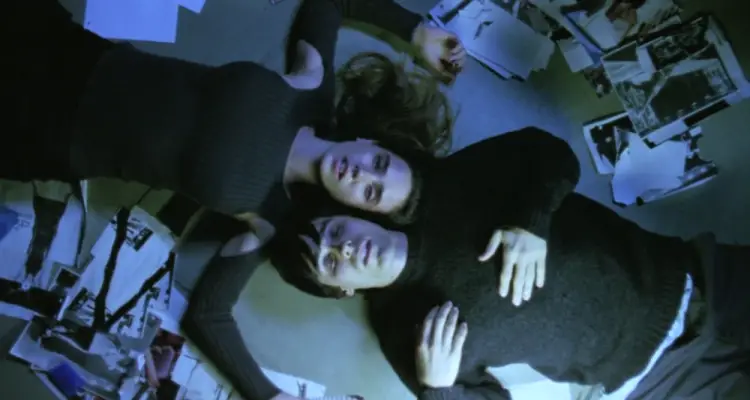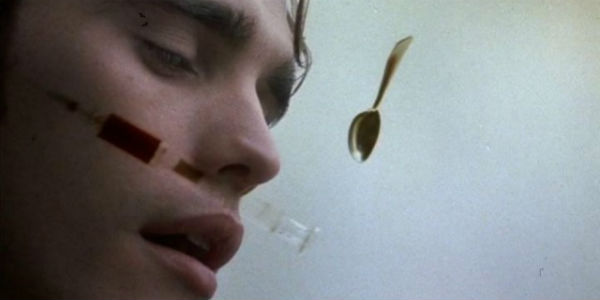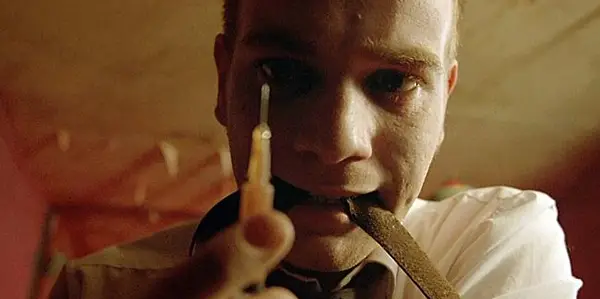Infographic: Drugs in Film

Cherokee is a 20-something human from London, UK. She has…
Last month Film Inquiry contributor Rachael Sampson reviewed The New York Film Academy’s newly released infographic exploring gender representation in cinema. In addition to this infographic, the NYFA also published statistics on the portrayal of drugs in movies from 1894 to 2014 for us to review.
I’ve always been interested in how society’s feelings towards something considered more ‘taboo’ like drugs is mirrored, if at all, in pop culture, especially in the context of film. Is there really a correlation between real life drug use and what is depicted in movies? How much is censored and when do we get an accurate version of what taking drugs recreationally is like, or the first signs of addiction? Is there a sense of political bias and/or scaremongering attitude?
This piece will explore these questions and also analyse the NYFA’s findings, sourced from a number of movies and references. What has drug cinema been like in relation to reflecting public consensus, and what will it look like in the future?
The censorship battle
One of the most debated and divisive topics when it comes to film is censorship. Not just censoring in the traditional sense with a rating system, but the frustration when topics in movies are watered-down or completely avoided because of the intended audience. Generally, these subjects are viewed as being uncomfortable to discuss in real life, and that is definitely reflected in drug cinema.
Broken down into different periods, the infographic details that the ‘Just Say No’ era (when the War on Drugs picked up steam in America) only released 52 films featuring drugs over a ten year span. Pair that up with the decade after called ‘Modern Drug Cinema’ and that number reaches nearly 600. This is a great example of political agenda moving into pop culture and what we consume. If the media is only focusing on the fearful side of drugs rather than the medicinal uses or helping those with drug addictions, you’ll find it hard-pressed for the world of film to offer a contrary viewpoint.

There are some movies, like Drugstore Cowboy (1989), that attempt to create important and timely conversations, but they’re not common. So many of them are forced to dilute their message or can’t get made because of wanting to tell a story in a different or less-censored way. We’ve all read those news reports about a director’s idea interfering with the studio’s one. Money comes down to the decisions made in film, and if a studio wants to cut out something ‘controversial’ that they think won’t fly on the market, they usually will.
If there is anything that this infographic shows in regards to drug censorship, it is that the type of movies coming out were fairly reflective of their time. The 30’s, 40’s, 50’s and 80’s were decades in drug cinema where it lived in a cloud of propaganda. The late 60’s and 70’s had a different view of addicts and recreational use, painting a much fairer and less judgmental picture. And the 90’s was a period with more variety, a reflection of ongoing drug exploration and the revival of LSD usage.

Trainspotting (1996) and Go (1999), both highlighted in the infographic, were different kinds of films looking at drugs. At the time of its release, Trainspotting was accused of glamorizing heroin addiction (I guess no one saw the baby scene, then) and Go explored raving culture.
Although drug-centered stories are more likely to exist than ever before, how much has really changed? Is there still some kind of political leaning to some of these stories, and are they bettering our understanding of drug culture?
More visibility?
I spoke about visibility not always being a progressive thing when discussing the lack of diverse LGBT films. This thinking can also be applied to many other topics or issues that are becoming more recognized in pop culture, including the way drugs and its users are depicted in cinema.
All the notable movies that the infographic lists under marijuana, for example, are stoner comedies. But, though marijuana isn’t looked down upon, those films live in an internalized culture where people who smoke ganja are regarded as a certain type of person. The stoner stereotype could be a lot worse than it is, certainly, but we have a habit of living with outdated views, at least until more and more things or people start to call us out on it. The Harold & Kumar trilogy is one of the only series of stoner comedies that attempts to comment on the tropes of the genre.

These people go about their day-to-day lives taking drugs and yet still having a relatively stable existence. While marijuana is the most commonly used substance in America, pain killers are higher up the ranking of daily drug usage (as in completely legal, prescribed pills), but you never hear about this. LSD, as the infographic points out, isn’t a physically addictive substance so it isn’t taken in the same way as heroin is.
These are all proven facts and statistics, yet what we see in movies – when drugs are viewed in a less critical way – is all about marijuana. 58% of people, when polled in 2013, said yes to marijuana legalisation and it is, by leaps and bounds, the most widely accepted drug. So where are the conversations about different narcotics?
We should definitely have films that feature the other side of the story, but more grounded ones. Drugs can be bad and destructive and we shouldn’t pretend that’s not the case when having open conversations about them. The majority of films that don’t feature marijuana tend to go for the jugular of that narrative, though, and that’s not particularly the most realistic or healthiest view to take. The up-and-down cinematic representation of drugs like heroin and coke is all too telling of the wavering consensus that we have about substances.
We’re no longer in the scaremongering era of the 80’s. A lot of people are far more educated and clued up on the subject and there are more resources to learn about drugs and addiction than ever before. That’s all good. There has, thankfully, been some progress but film is still not touching on other drug scenes, especially ones that are prevalent now.
What’s next in drug cinema?
Marijuana legalisation, more legal highs on the market, the rise in Ketamine, buying online – these are all recent trends in drug culture that are yet to fully transition into movies. Will these ever be reflected on screen? Possibly, but not in the way that we would imagine or in the time frame of them happening.
Like the infographic mentioned, films take years in production. For them to accurately depict what the time is like now is a hard task. So much can change in three or five years that, when it finally does come out, it’s almost a little historic. But, we now live in a different age of movies than that of the 60’s, which saw the shift from the ‘Production Code’ era to ‘The Times They Are-A Changing’ period.
There is a lot more freedom to the cinema of today than the creative constraints that filmmakers had to endure in past decades. The internet has made a gateway for uncensored material and impacted our viewing habits, and at the same time altered how we consume drugs and educate ourselves on them. So, maybe we’ll get another Drugstore Cowboy or Trainspotting sooner than we think.
What do you think of The New York Film Academy’s Infographic? Did you find out any drug cinema related facts that you didn’t know before?
source: New York Film Academy(top image: Requiem for a Dream – source: Artisan Entertainment)
(Infographic courtesy of New York Film Academy)
Does content like this matter to you?
Become a Member and support film journalism. Unlock access to all of Film Inquiry`s great articles. Join a community of like-minded readers who are passionate about cinema - get access to our private members Network, give back to independent filmmakers, and more.
Cherokee is a 20-something human from London, UK. She has a morbid fascination with Justin Bieber, is a collector of cute hats and watcher of bad Asian rom-coms and B-movies. She can usually be found in her fortress of solitude - lying in bed with a comic book in hand. You can check out more of her writing at www.cherokeeseebalack.tumblr.com. Jim Jarmusch is her hair inspiration, Tahar Rahim is her forever-film crush and one day she hopes to be as cool as Marlon Brando.













